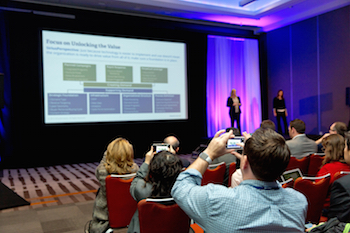Technology Buying Is a Team Sport – Does Your Team Know the Right Rules?
- Technology buying in B2B has reached a fever pitch, but investments don’t always live up to their promise, which is not the fault of the technology but the way it was chosen and deployed
- A single technology category can’t address complex business priorities, so it’s critical for leaders and their teams to understand more than feature and function differences
- Technology buying must begin with defining a business priority, then defining the mix of technologies, processes and skills required to address it
Here’s a question: When was the last time a technology purchase you made really lived up to your expectations?

Now, assuming you were able to come up with one, let’s consider why that purchase turned out to be a good one. What did you and your team do differently that set you and your vendor up for success? I’m willing to bet that a few things were involved in making a smart choice:
- Clear goals. When going into the buying process, you and your team understood why you were buying and what you wanted the tool to help you do. There was a holistic vision for what the team needed to deliver from a business goal perspective and what it would be worth to the business to invest to realize those goals.
- Context. When evaluating the capabilities of the tool, you and your team thought about other technology you had in place or other tools you were evaluating. You understood how any new tool would need to fit into the existing technology stack and what its features could contribute to create a complete capability to address your business priorities.
- Reality check. The team and its leadership appreciated how hard or easy it would be to deploy a new technology, and were specific about identifying other system, data or process changes that would be required to realize the benefit. There was also a realistic picture of the skills or training that would be needed to ensure that those asked to use the tool would be able to do so, and incentives to ensure they’d be willing to make the change. You had enough budget to complete a successful deployment, including ongoing focus on adoption and ensuring that the team integrated use of the tool into everyday execution.
- Evidence. The vendor you chose helped define implementation requirements and timelines. It shared valuable, practical content that explained what it would be like to be a customer. The vendor also connected you, formally or informally, with other customers who could tell you about what their deployment was like and what helped them to succeed so you could avoid pitfalls. The vendor continued to include you or members of you team in its customer community to enhance the value you could get from its offering, and get your feedback on what needs to change.
Now let’s think about a time when you didn’t get the value you hoped for from a technology choice. Which of these areas was absent? What did the team not consider when making the choice? What did they fail to ask of the vendor, or of the vendor’s customers, that would have helped make the purchase a better one? Did the team really understand all the options they had for solutions, and what tools you already had that could help them meet their goals? Was the purchase made in response to a business priority or as an “everyone else is doing this, so we should, too” reaction?
Most of us who make technology buying decisions have made some mistakes that helped us figure out what works. What if you could help your team skip some of those “life lessons” and jump right to better decisions? You’d need to give them guidance on how to move away from looking at a technology decision as a standalone tool-buying effort and how to see it as a business-goal-achievement effort. What would help you create fewer disappointments and deliver more positive outcomes?
We’ve been busy here at SiriusDecisions working on a collection of content for our upcoming Technology Exchange event. Our mission for this event is to give teams the actionable advice they need to make smart choices when it comes to technology. We’re explaining how to get more value from the many valuable options in the market to help B2B companies with their sales, marketing and product functional priorities, and how to work with vendors to ensure that success. When everyone plays by the right rules, the game is a lot more fun, and your odds of winning are much higher. We hope you and your team will join us in Austin.